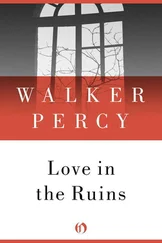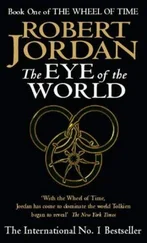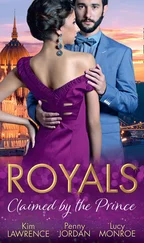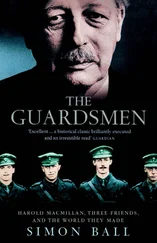Anderson seems not to have concerned himself too much about which species of insect produced the red dye; nor whether wild varieties of cochineal were inferior to the domesticated ones in the quality of the dye they produced. Banks, however, was bothered by this. Without the real cochineal being raised in India there would be no chance of undercutting the Spanish. Banks knew it had been domesticated in Oaxaca but could this be reproduced elsewhere? He embraced the texts that consistently spoke about the superiority of the domesticated cochineal; and he interrogated every text he could lay his hands on which included observations of dye-producing scale insects, concluding, finally, that these were all wild varieties.[56] Oaxaca was the only certain source of the real domesticated cochineal.
During the first wave of an interest in cochineal in 1788, Banks did what he could to help the East India Company develop a cochineal industry. One of the first things he did was to send samples of Mexican cactus from Kew to the Calcutta Botanic Garden where they were successfully cultivated and from where they were successfully distributed to other parts of India.[57] At the same time and inspired by the epic story of de Menonville’s travels to and from Oaxaca, he suggested that the Company should send someone to Mexico to get the real cochineal. Banks even found someone who was prepared to do this. At the time, however, the Company was not interested in spending money on this venture and when they learned that the wild cochineal and the cactus were plentiful and there for the taking in Rio de Janeiro, they decided to follow that route.[58] Though Banks disagreed with them he continued to advise them and produced instructions for managing the insects and plants on a long sea voyage.[59]
The idea of a direct ‘procurement’ surfaced again in the Court of Directors in 1790 and Banks, again, reiterated his original plan.[60] Banks reminded them that when this issue was last raised, he had found someone living on the Gulf of Honduras who would be prepared to undertake the risky venture. His brief was to get the cochineal and the cactus and deliver them to England for which he was to receive the sum of £1000 (near £100,000 in today’s value). Banks would ask this person to accompany the precious cargo together with some local people who knew how to cultivate the insect and plant and could be induced to settle in India. Banks added that he would take care of all the details concerning the transport and care of the insect and plant.
Nothing happened. Banks was frustrated.[61] Then, in mid 1792, Francis Baring, the Chairman of the Court of Directors of the East India Company, head of Baring and Co., one of the most important banking concerns in the world, and a man who knew a bit about cochineal, got in touch with Banks about reviving the idea of sending someone to Oaxaca once again.[62] Banks indicated that he was not willing to put any more effort into this scheme – ‘[I] Cannot but seriously Lament the time [I have] spent in Promoting it – unless the Company could guarantee that this time they were serious.’[63]
Baring’s reply offered Banks the guarantee he sought but then towards the end of his letter he raised the old topic of getting wild cochineal from Brazil. Banks was clearly upset and irritated. ‘I have reported against Sylvester being brought from Brasil,’ he noted in exasperation and in his own hand at the end of Baring’s letter.[64] Six weeks later, Baring and several of his directors finally got Banks’s point about going to Oaxaca, doubled the premium to £2000 and told Banks that he should go ahead with his plan.[65]
Banks did not at first warm to the idea but soon changed his mind – ‘it is a Favorite Plan of Mine,’ he admitted.[66] Two years had, however, been wasted since he last pursued this and he was ‘ignorant whether or not the Person on whom I meant to rely for the first attempt towards putting it into Execution is still alive or if he is Whether he still resides as he did’.[67]
The person Banks had in mind was James Bartlet. Banks had heard from Bartlet when he wrote from Honduras on 21 July 1791, telling Banks that a botanical tour of the area would prove very rewarding.[68] Bartlet was the brother of Alexander Bartlet who, in company with two others, ran a trading company between London and the West Indies and owned plantations on several islands.[69]
On 14 January 1793, Banks wrote to Bartlet. He could not hide his irritation at the Company’s neglect of his plan to supply India with the true cochineal – four years in the making, he remarked – but the main thrust of the letter was to assure him that the East India Company now meant business and that the original plan stood. Banks noted that ‘a Frenchman’ [de Menonville] had proved that both the cochineal and the nopal tolerated a sea voyage well but that, in any case, once the cargo arrived in London, Banks would put the cochineal in his hothouse where he was already growing nopal.[70]
It all sounded promising but, in the event, it soon unravelled, as Banks explained to Hugh Inglis, the Deputy-Chairman to the Company’s Court of Directors.[71] Banks had no reply from Bartlet; it had now been three and a half years since Banks had written to him.[72] Even if someone could be found to take Bartlet’s place, Banks remarked, he doubted if the venture would be successful now because of Anderson’s foolhardy decision to print and distribute Banks’s directions for transporting cochineal and nopal by sea, including sending them to a botanist working for the King of Spain. This and the publication of de Menonville’s book, Banks argued, meant that the Spanish were more vigilant than ever and the venture was now ‘more likely to End in the Loss of Liberty or Even of Life, than the final attainment of the Object in Question’.
For these reasons Banks was bowing out of the plan which he had been enthusiastic about years before. Besides which, with Britain now at war with France, and rumours rife of a secret treaty between France and Spain, it would be foolhardy to try to enter Mexico in secret and steal the plants and insects.
Even though Banks said that he was no longer willing to be involved with the cochineal project, he did leave a little room for manoeuvre and ended the letter to Inglis with the promise that if something did come up, he ‘would not decline to Proceed’.
Sure enough something did occur. On 23 June 1802, Banks received a letter from Robert Sproat, a Scottish physician.[73] The letter, dated 5 March 1802 and sent from present-day Honduras near the town of Palacios on the coast, reminded Banks that they had been introduced in 1794 when Sproat was temporarily in London. Sproat also told Banks that he had, as agreed, sent him part of a collection of plants in 1796, but, unfortunately, the ship carrying them was intercepted and ended up in New Orleans, then under Spanish control, where none of the contents survived; the other part of the collection, which remained with him, was destroyed during an attack by the local people. What Banks made of all this we don’t know but a passage in the letter a little further on would have jumped off the page. It reads: ‘I also had the Opuntia sent me from the city of Comayagua & having transplanted it in an adjoining plantation it flourished exceedingly. I was even flattered with the full hopes of getting in to my possession the Cochineal Insect, for conceiving it to be one of your especial desiderata, I used my utmost influence to obtain it from the interior of Guatemala; I at last received the Insect but to my great astonishment found that either through ignorance or design in the sender they were all bruised to death! A circumstance I relate not Sir to claim any merit for the exertions I made, but for your information respecting the existence of the Insect in that country.’ Sproat concluded this part of his letter by commenting that with more care the operation might have succeeded and been sent to England – ‘without trial it is but conjecture at best, which affords no satisfaction.’
Читать дальше












